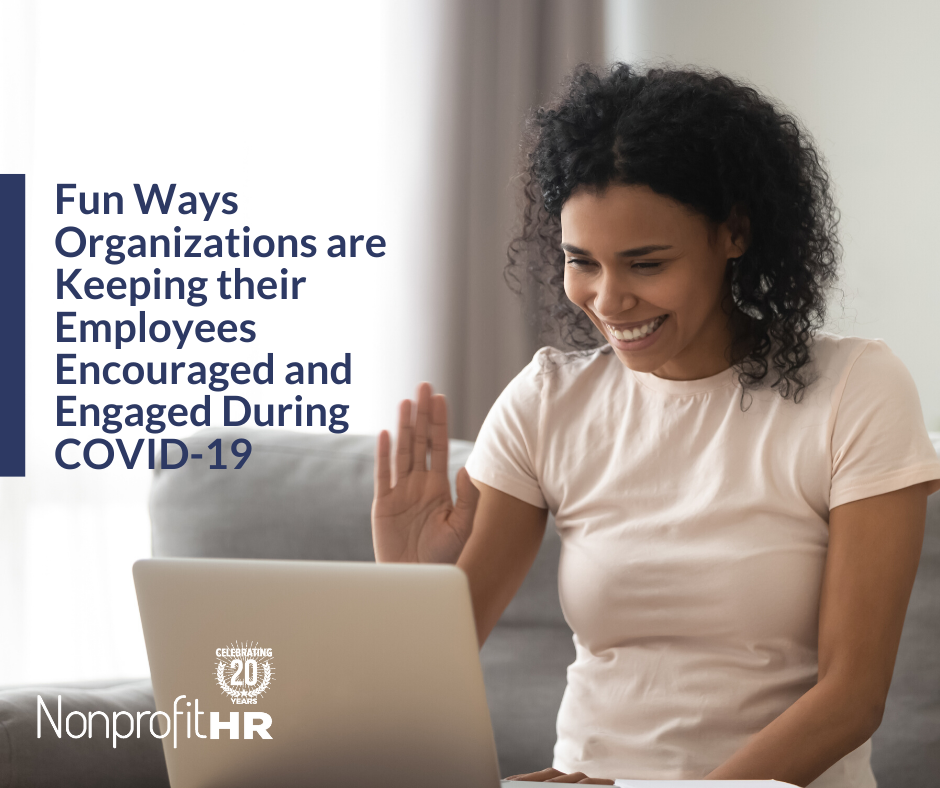WTOP: 5 ways nonprofits can…
Related
|
 |
 |
 |
Jumpstart a Conversation about Your Organization’s Employee Assistance Program

There’s more to embrace regarding EAPs and their endless relevance and benefits. Research from the American Psychological Association (APA), a Nonprofit HR client, shows that all age groups from the Greatest Generation (those born between 1925-1945) to Generation Z (those born between 1995-2012) are experiencing stress at a higher than healthy level. A recent survey of 2,000 professionals by the Korn Ferry Institute found that nearly two-thirds of workers have experienced noticeably increased stress levels over the past five years. These findings correlate with the APA’smost recent study, Stress in America: The State of Our Nation, which lists work as the thirdhighest stressor in the U.S. today. Stress not only affects motivation levels on the job, but more is being learned about the emotional and physical tolls it can take on individuals overall. Survey respondents reported workplace stress as negatively impacting personal relationships, reducing their amount and quality of sleep, and in some instances, causing employees to quit their jobs. Severe stress has also been linked to hypertension, cardiovascular disease, decreased mental health, and other potentially hazardous or fatal conditions. As stress levels continue to rise, ensuring proper coping resources are available for employees will remain a priority.
According to the 2016 Society for Human Resource Management (SHRM) Employee Benefits Report, 77% of their surveyed members provide their staff with an EAP. Findings from the Chestnut Global Partners show that marital and stress-related concerns consistently rank as the top two reasons for accessing EAP services. Additionally, anxiety levels are on the rise as the number of individuals seeking support for anxiety has increased by 29% since 2015. Now ranking as the third most common EAP concern, anxiety and its potentially debilitating effects on performance has garnered more attention as a work issue.
We dug deeper to see how Nonprofit HR clients are using EAPs, and our data suggests that the majority of missions that we serve provide their staff with an EAP. Those that do not have a formal EAP in place often have a low-level plan offered through their life insurance policy.
Quick Facts for Describing Your Organization’s EAP
- An EAP is an employee benefits program that offers support and services in a number of ways in order to sustain and or increase the functioning level of staff at all levels of an organization.
- Most often, EAP resources include counseling, legal services, work/life services, and financial services.
- Some EAPs provide services for family planning, addiction support, grief counseling, help navigating one’s benefits coverage, and even scheduling appointments with doctors.
- EAPs are there to support internal staff’s counseling needs, mediation with tough relationships, support healthy communication skills, and to foster positive outcomes for other talent-relations areas of challenge.
- EAPs offer 24-hour support to assist staff during and after business hours.
- Using EAP services are completely voluntary.
Increasing Awareness for Your Organization’s EAP is Good for Business
Why is it beneficial for an employer to provide an EAP for their staff? Facing life’s everyday stressors can take a personal toll on individuals, even impacting work attendance and performance levels. We all face stress and manage it differently; in fact, a little stress is normal. But when it becomes apparent that an employee’s stressors are negatively impacting their presence and productivity, it may indicate the need for additional support. Emphasizing your organization’s EAP keeps you a step ahead.
Most EAPs can be designed to fit the needs of each organization. No two programs are exactly the same, neither are they a one size fits all benefit. EAP services are available to employees and their immediate family members. Employers can provide the EAP’s access information, whether communicating it directly to the individual in need or to the entire team on a regular basis. From there, staff can decide whether they’ll utilize the benefit. With the exception of life-threatening concerns or legal matters, all EAP requests are handled confidentially; and employers will not be notified of when or how their staff received support. When an employer’s team is educated about their EAP benefit, staff feel cared for and supported by management. This can easily shift the internal culture of an organization in a positive way. The benefits are endless!
Don’t have an EAP, or feel as if your current program needs to be updated or revised altogether? Contact your Nonprofit HR consultant, your benefits broker, or even me. I’d be happy to share my experiences with you in order to increase the success rate of your EAP reintroduction campaign.
Steps for Rolling Out or Re-introducing an EAP Program
- Find or refresh and approve the plan that is right for your organization.
- Create a communication plan that organizes the information in an easily digestible way, and share this information with all teams responsible for information distribution. Examples include web postings, messaging for employee handbooks, flyers for staff common areas, and tips sheets for hiring managers and team leaders.
- Schedule a meeting to present the quick facts of an EAP as listed above.
- Make time to answer the questions that your staff will have. You may consider setting up a few special meetings to ensure there is adequate time for discussion, in addition to follow-up meetings to reinforce the priority.
- Provide easy-to-follow directions on how to access the EAP.
- Share any fees outside of what’s covered by the employer
- Confirm its confidentiality statement via the Health Insurance Portability and Accountability Act (HIPAA) regulations – be sure to run this by legal counsel and the EAP administrators.
There’s never an inconvenient time to reintroduce your EAP, any time of the year is appropriate. I would love to hear from you and how we might help you increase your staff’s awareness level of your EAP and other benefits that support their well-being.
Lisa McKeown
Managing Director, Total Rewards
Nonprofit HR
Need to talk about your organization’s EAP or other wellness program needs? Email me at [email protected]. Or schedule a mini-consultation with our Client Services Team.






























